Releasing new products without strategically choosing a line or brand extension can be a costly mistake. Data suggests that one of every four new products harms the entire catalog. Want to know how to avoid this pitfall?
How to avoid this pitfall is the point of this article. Whether you are an established brand with a stronghold in the CPG sector or a start-up looking to challenge these big brands, here’s what you will learn. This article will discuss the following:
- A brand and product line extension definition.
- The differences between each brand strategy.
- The benefits and risks of both a brand and line extension.
- What you must consider before choosing either option.
- Examples of line extension failures and successes.
What is a Line Extension?
Brands are always looking for ways to capture more market share. One way they can do this is by creating new product lines in familiar categories, giving a further reason for people to talk about their brand and retailers to stock products on their shelves.
A great way to define line extension is with an example. Patagonia provisions long root beer is a line extension borne out of the parent brand’s initiatives in environmental impact and global concern; The beer features a water-saving grain. While beer is certainly not what people know Patagonia for, entering this category helps to reinforce brand awareness.
What is a Brand Extension?
Brand extension is when a company takes its existing or new brand to enter a new category. A brand extension is an opportunity for broader brand recognition outside the categories where they traditionally do business.
A great example of a sub-brand extension is Patagonia provisions long-root beer. They bore this line extension out of the parent brand’s interest in environmental impact and being a social business. The beer features a water-saving grain.
While beer is certainly not what people know about Patagonia, entering this category helps to reinforce brand awareness.
The Most Common Types of Brand Extension
Endorsed brand: An endorsed brand is when the logo remains, but the overall theme of a packaging design changes.
House of brands: Sometimes, a front-of-pack logo interferes with brand perception through the consumer’s eyes. If entering a completely different market where your brand distinction and awareness are nearly irrelevant, creating a product line extension with a new name and face makes sense.
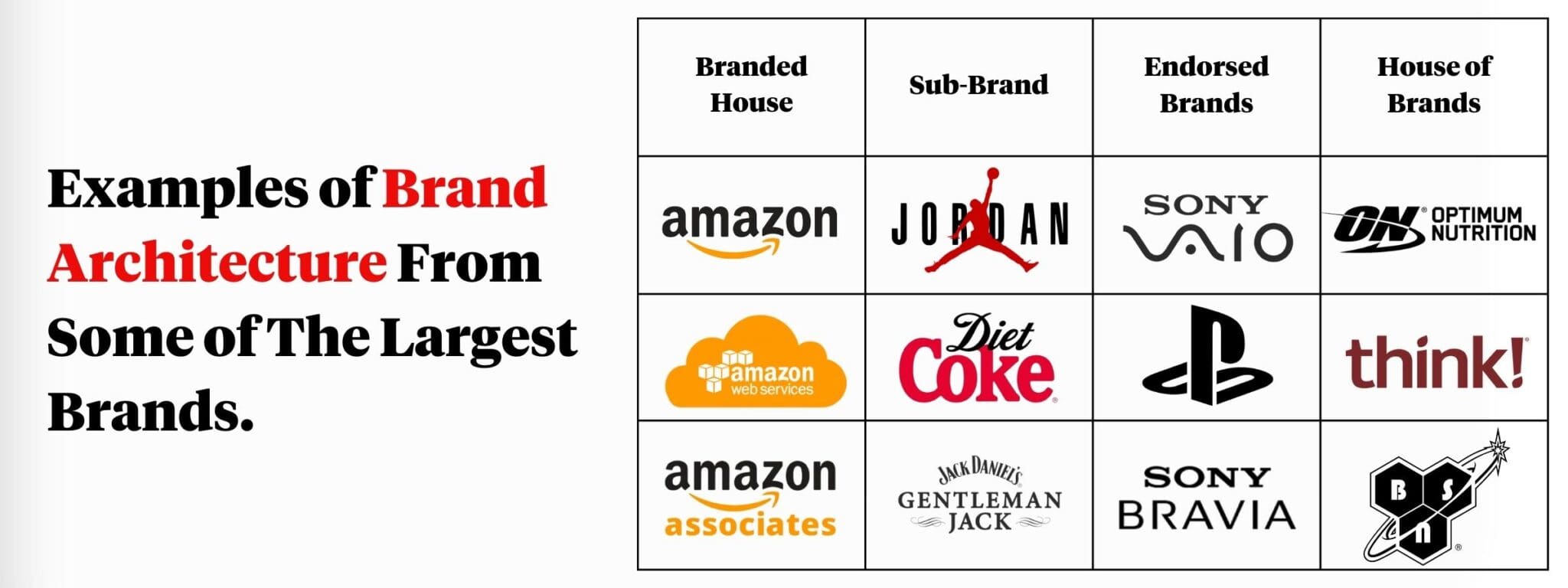
Reasons To Pursue a Brand Line Extension
There is no such thing as stagnant in the CPG and FMCG industries. Your brand is growing or withering away to a slow death. To prevent shelf decay, you need to nurture your brand.
A line or brand extension is sometimes, but only sometimes, the answer to this problem. Here are the right and wrong reasons for starting the line and brand extension conversation.
Legitimate reasons For Pursuing An Extension
The following reasons are a starting point, not a justification for producing more and more products.
Leverage Existing SKUs
- Identifying opportunities for capturing market share with different sizes
- Distribution has reached a point where grab-and-go will generate revenues and increase brand awareness.
- Your product engages well with other products and can work in collaboration for a product kit (i.e., coffee with a coffee mug)
- You can create interest and compulsive purchases by creating seasonal offerings.
Creating New SKUs
- You have saturated the market with your product and can create a product for nearby categories.
- People love the quality of your product and will further support the brand if a product pairing exists. (i.e., razor company producing shaving cream)
- You identify an opportunity to create a product that aligns with your mission statement or brand value proposition.
Poor Reasons For Choosing to Extend Your Products
Here’s a short list of inappropriate reasons for pushing out new products. It is surprising how many national brands use these reasons to add additional SKUs to their company.
- Investors and shareholders press you to produce more products to grow the brand.
- You are afraid retailers will only continue supporting your line if you give them more to sell.
- Your competitor is choosing to extend its products and enter new retail categories.
Benefits of a Line Extension
On one side of the coin, line extensions are less complicated. Less thought and research need to go into new product branding. Retailers may like the idea of a line extension when they can easily position your new SKU for a quick upsell. A successful line extension strategy helps a brand protect itself against competition within its category and consumer demographic.
Product Line Extension Example (done right)
Years after launching its initial product line, Cellucor released the C4 energy drink in 2011, taking the supplement industry by storm. Capitalizing on brand positioning in existing independent retailers, Cellucor established a stronghold in these locations while negotiating deals with GNC, Costco, and Bodybuilding.com.
After years of successful powder sales, C4 entered the RTD game. Their initial packaging could have been better, but since they treated the product as a line extension to their sub-brand, the only cost was design, production, and distribution. The C4 RTD could piggyback off the current marketing and existing retailer relationships.
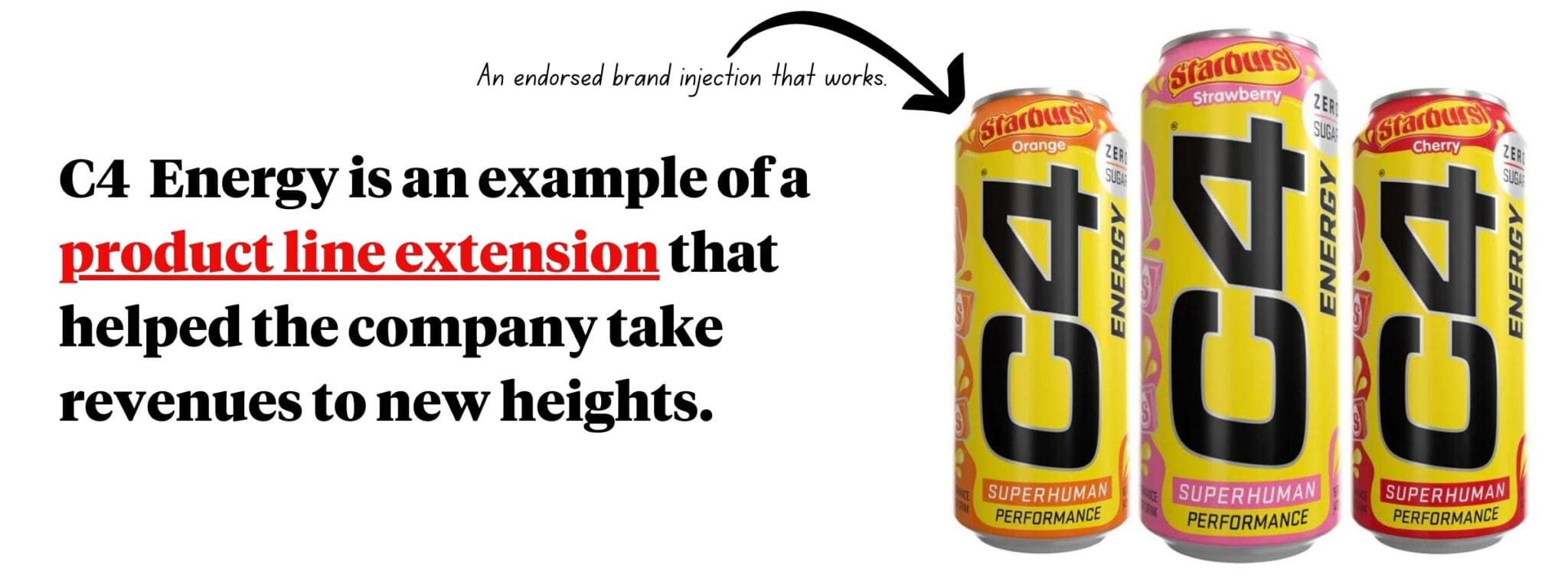
C4 is among the best-selling energy drinks with retailer relationships well outside the sports nutrition category.
Risks of a Line Extension
Line extensions sometimes go wrong, and when they do, it costs more than the investment into the product. A line extension failure can cost your brand revenues, product placement, and distribution for your previously successful products.
Product Line Extension Example (done wrong)
In the 1980s, Pepsi Co. started sipping away Coke Cola’s market share. To combat Pepsi’s growth, Coke replaced the best seller in their product line; They locked away and replaced the original formula with their 2.0 version. Why? Internal tests determined the Pepsi challenge to be accurate, as more people preferred the taste of Pepsi to Coke.
Regarding product line extension examples, Coke 2.0 is as bad as it comes. Coke 2 was a failure, and it cost the company a fortune. Not only did it hurt revenues, but it hurt their overall brand image.
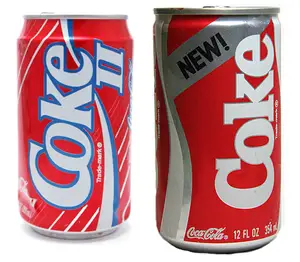
Eventually, they brought back the original formula as Coke Cola Classic, but in time, 2.0 floundered away, and Coke Cola Classic became, well, Coke.
Benefits of a Brand Extension
With the right brand extension strategy, top-line revenues and consumer satisfaction increase. Their brand name receives wider exposure thanks in part to fresh media attention. When approaching a new product category for marketing, sales, and brand distinction, a brand extension helps prevent “muddling the water” with conversations belonging at different times and with other people.
Brand Extension Example (done right)
Some might see this as a product line extension, but we call it a brand extension when you go from soda pop to hard alcohol. Hard Mountain Dew is disrupting the alcoholic market with their broad retail relationships and internal distribution centers. Hard Mountain Dew carries the logo, but that’s about it. Their alcohol packaging design focuses more on “hard” than Mountain Dew.
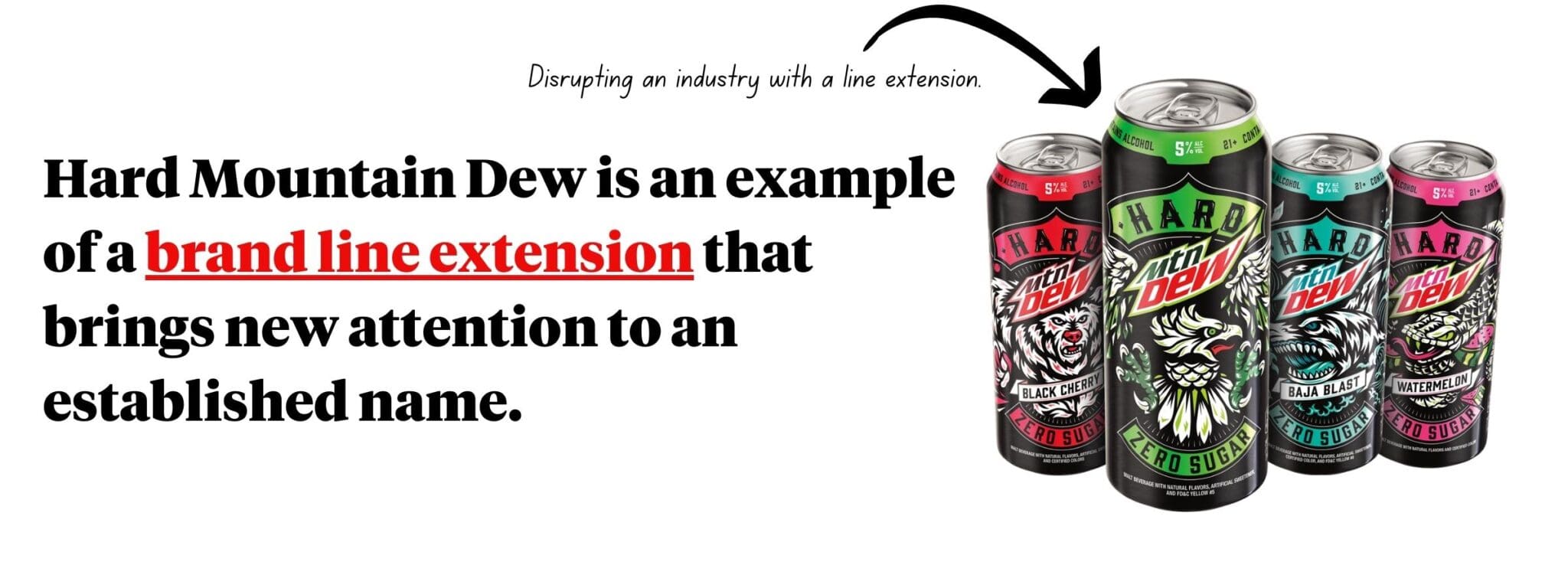
The media attention earned by ruffling a few feathers qualifies Hard Mountain Dew as a successful brand extension. Their success will inspire other soda brands, and we expect them to follow suit.
Risks of a Brand Extension
A brand extension may seem like the correct answer for companies suffering from brand dilution, but this is only sometimes the case. Most times, after years of unnecessary brand stretching, companies must go through a brand consolidation with a packaging redesign rather than create an entirely new brand.
With an extension, expect an increase in brand management. If unprepared for the work that goes along with a product brand extension, the risk will be greater than the reward.
Brand Extension Example (done wrong)
Do you associate beef lasagna with toothpaste? Neither do we. Besides the need to brush our teeth after eating this carb and fat-filled meal, there’s no reason a household products brand will bring their logo over when creating packaged frozen food.
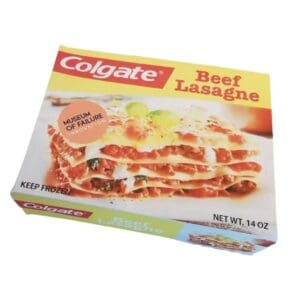
In the 1980s, Colgate (may have) had the bright idea of creating a meat lasagna as a part of its product line. Colgate is disputing the product’s existence. Still, either way, a toothpaste brand making beef lasagna is an example of a line extension where maintaining the house brand’s logo on a brand extension is a bad idea.
Considerations For Your Brand Strategy
There is much to consider when deciding to extend your product line. Here are the two most important factors to consider to get you started.
Brand Equity
At our agency, we take line extension vs. brand extension seriously. Through a proprietary process, we determine the impact of brand equity on any new product launch. When you understand how brand equity works across a different category or demographic, you know the role, or lack thereof, that your brand name carries.
Marketing Strategy
Deciding to go with a line or brand extension changes how you approach your marketing strategy. Are you willing to commit financially to market a product to those who do not know your name? Or is it better to leverage your brand loyalty and market to your existing customer?
Line Extension VS. Brand Extension Testing
While you can learn a lot through existing market research, product and package testing is the best way to determine the direction. At the end of the testing process, you will understand when (if any) brand association increases initial purchase intent.
Consumer Testing & Packaging Design Agency
Are you wrestling with the idea of a brand extension vs. line extension for your brand? At SmashBrand, our packaging design process includes market research and consumer testing to determine the best strategy for your brand. Book a time to discuss your project with our team.
Subscribe to
Nice Package.
A monthly newsletter that unpacks a critical topic in the FMCG & CPG industry.
Free Resource.

CPG product repositioning guide.
Explore the five undeniable signs your CPG product needs repositioning along with strategies for leveraging consumer insights for a guaranteed market lift.
Learn More About CPG product repositioning guide.